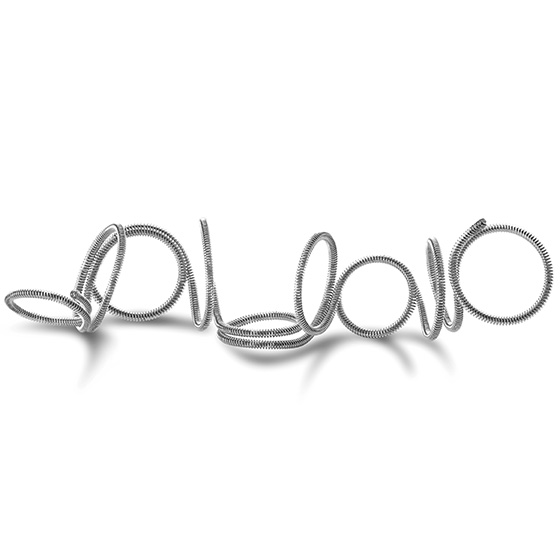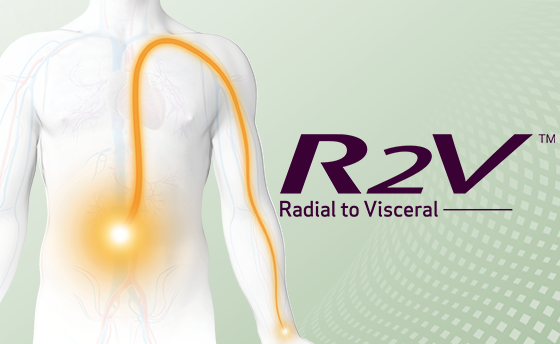Midterm Recanalization after Arterial Embolization Using Hydrogel-Coated Coils versus Fibered Coils in an Animal Model¹
Overview
To compare angiographic and pathologic effects (ie, occlusion, recanalization) after embolization with Hydrogel-coated coils and fibered coils in the renal and internal iliac arteries after 7 days and 1 and 4 months in an animal model.
Study Design
- 12 sheep had 1 iliac and 1 renal artery randomly embolized with hydrogel-coated coils or fibered coils.
- Hydrogel-coated coils (AZURTM HydroCoil System) were used in 12 arteries and fibered coils (Interlock and Nester) were used in 12 arteries.
- Renal arteries were embolized with detachable 0.018 inch coils and iliac arteries were embolized with pushable 0.035 inch coils.
- Control angiography was performed at 7 days, 1 month and 4 months to assess recanalization.
Result
Overall recanalization rate

Overall hydrogel-coated coils have 20% recanalization rate at 4 months compared to 75% recanalization rate for fibered coils (p=0.01, Χ2 test).
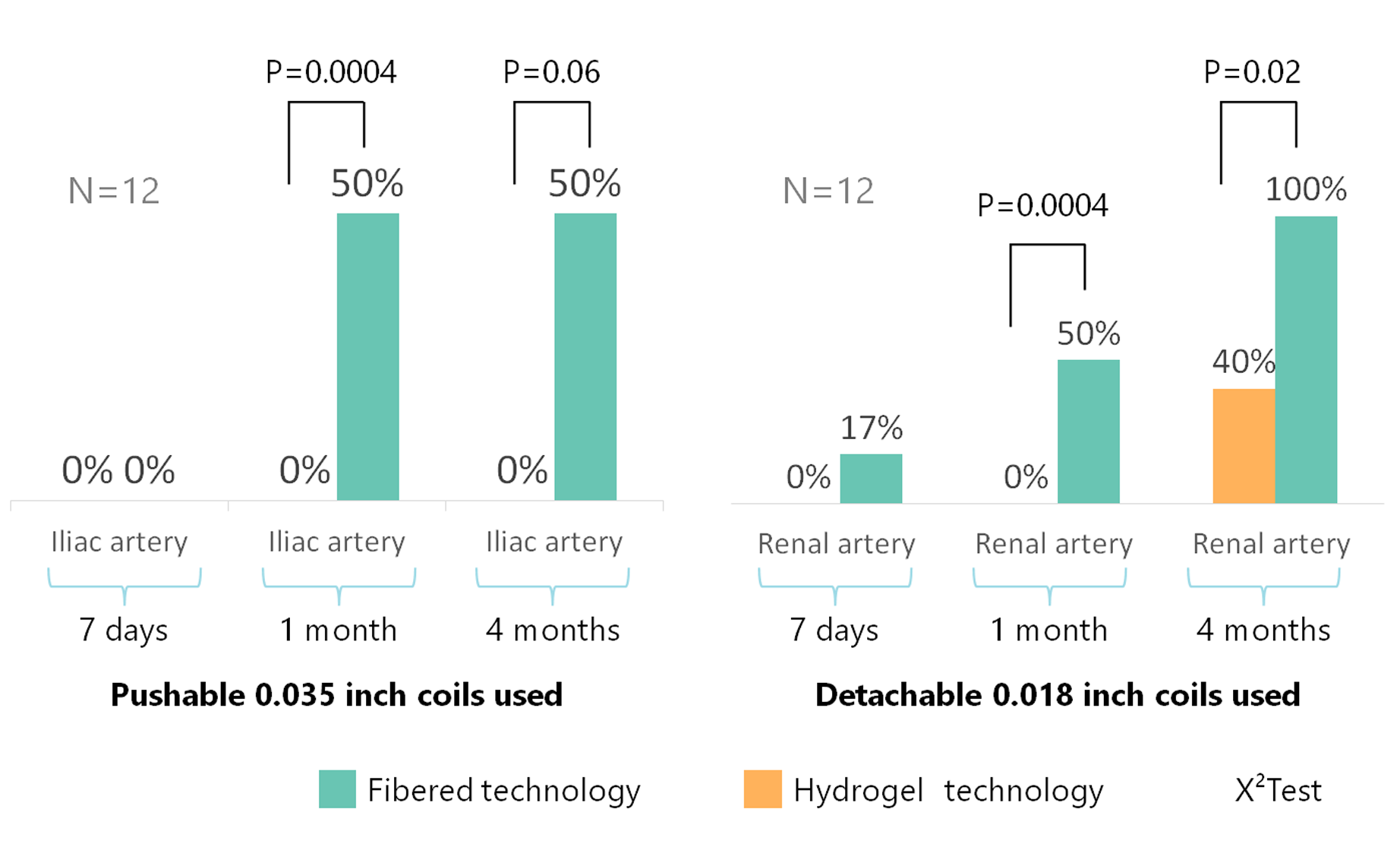
Hydrogel-coated coils have significantly lower recanalization rate and provide long-term occlusion.
Mean histological composition at 4 months
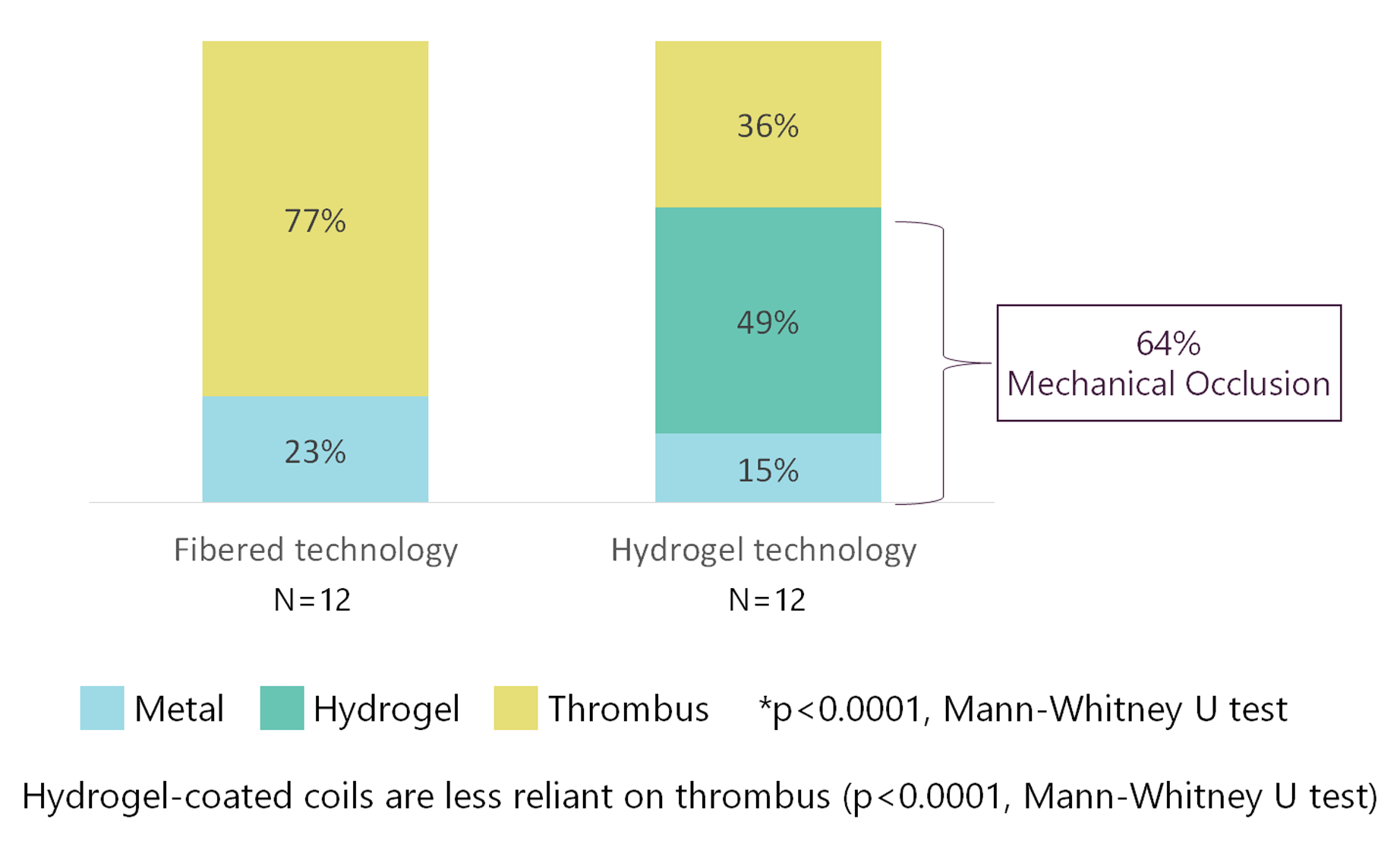
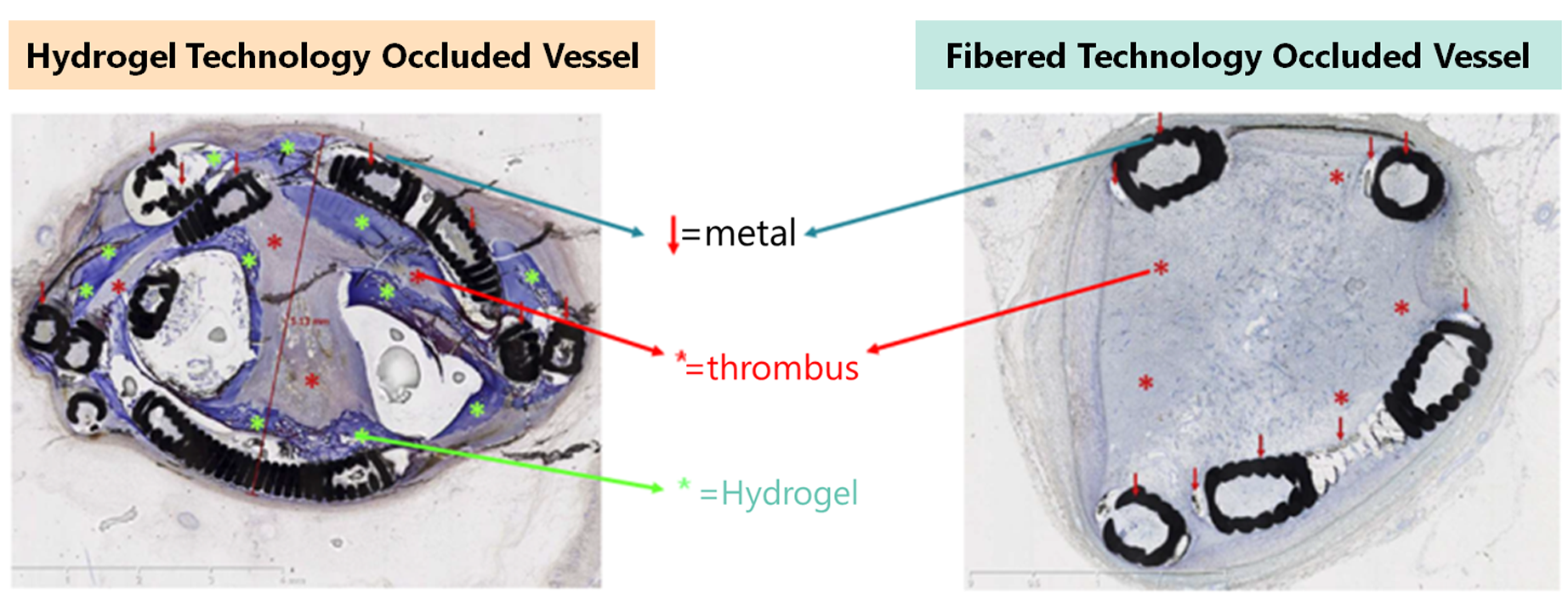
Reprinted from J Vasc Interv Radiol. vol 30, Fohlen, A et al, page 940-948., Copyright (2019), with permission from Elsevier © SIR
Conclusion
- The AZURTM Peripheral HydroCoil Embolization System offers the benefit of volumetric filling with Hydrogel. This reduces the coil’s reliance on thrombus for embolization in the animal model.
- Hydrogel technology relies less on thrombus than fibered technology.
- Hydrogel-coated coils provide long-term mechanical occlusion.

